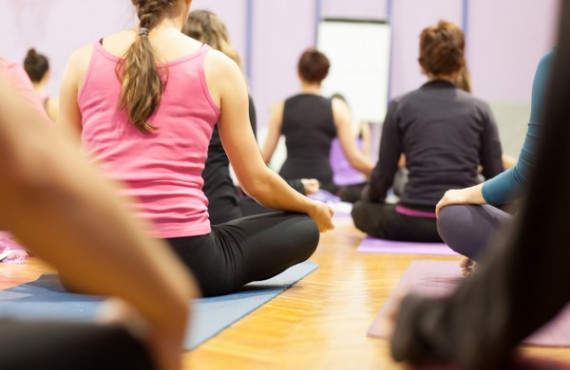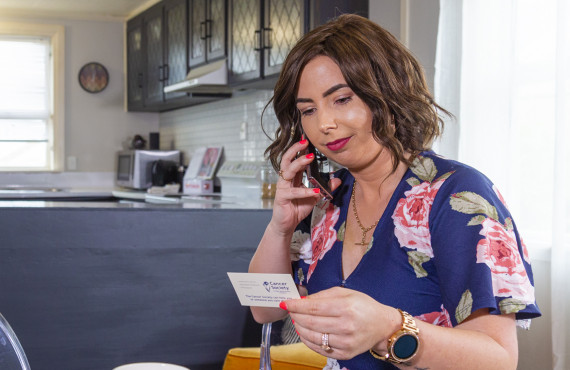If your lymph nodes are removed or damaged during cancer treatment, you may get lymphoedema.
What is lymphoedema?
Lymphoedema is the swelling of part or parts of the body that occurs when the lymphatic system is not working properly.
The lymphatic system consists of many tiny channels throughout the body called lymph vessels or lymphatics.
Lymph nodes (also known as glands) are found throughout the body and are part of the lymphatic system.
The lymphatic system contains a series of lymph vessels (tiny channels under the skin) that carry the lymph fluid through the nodes back to the bloodstream.
Lymph nodes contain white blood cells that help fight infection and diseases, such as cancer.
The number of lymph nodes you have is different for each person.
For example, there can be between 15 to 30 nodes in an armpit. Lymph nodes also vary in size from a pinpoint to the size of a baked bean.
Lymph nodes can swell and become tender when you have an infection. If you develop a swollen lymph node, get it checked by your doctor.
Sometimes, cancer cells spread into the lymph nodes from cancer in another part of the body. It is also possible for cancer to start in a lymph node. This type of cancer is called lymphoma.
Symptoms of lymphoedema
Signs and symptoms of lymphoedema
- Swelling
- changes in feeling (heavy, tight, full, tingling or stiff)
- skin changes (your skin may feel tight, or stretched)
- aching, pain or tension
Having these symptoms does not mean you have lymphoedema, but it is important to get any changes checked.
Ask your treatment team for a referral to a lymphoedema therapist.
What causes lymphoedema?
Lymphoedema can be caused by cancer treatments or the cancer itself.
There is a risk of lymphedema if you have:
- lymph nodes are damaged or removed during surgery
- radiation treatment to the lymph nodes
- cancer cells blocking the flow of lymph fluid
- cancer that is pressing on the lymph vessels blocking the lymph nodes nearby
Lymphoedema occurs close to the part of the body affected by treatment. It can develop weeks, months or years after cancer treatment.
Cancer treatment has changed over the years to help reduce the risk of lymphoedema.
Most people who have surgery or radiation treatment will not get lymphoedema. Your treatment team will be able to explain if you are at risk of lymphoedema.
Treatment of lymphoedema
There is no cure for Lymphoedema. In most cases, it can be controlled with treatment.
Treatment for lymphoedema may include:
- massage
- compression
- skincare
- exercise
A lymphoedema therapist will help you make an assessment and a treatment plan.
Lymphoedema therapists
These are nurses, physiotherapists or massage therapists who have undertaken specialised training in lymphoedema management.
They can help you with lymphatic drainage massage, fitting compression garments, and tips for living with lymphoedema.
Your treatment team or our nurses will be able to let you know about trained lymphoedema therapists in your area.
Lymphoedema therapists work in public and private practice. If you have medical insurance, the cost may be covered. Check your policy.
Compression garments for lymphoedema
These should be fitted by a lymphoedema therapist or another trained person.
They should be worn according to the therapist’s instructions and cared for according to the manufacturer’s instructions.
Talk to your lymphoedema therapist about suppliers and subsidies that may be available.
Complex Physical Therapy (CPT) for lymphoedema
If your lymphoedema is moderate to severe, your lymphoedema therapist will probably recommend a course of Complex Physical Therapy (CPT).
This can be successful in reducing and controlling swelling, and the earlier it is started in the development of lymphedema, the higher the likelihood of success.
CPT involves daily bandaging and massage for two to three weeks, along with exercise, skincare, dietary advice, and a compression garment fitting.
Looking after your skin with lymphoedema
If you have lymphoedema, looking after your skin well can reduce the risk of infection.
If build-up from lymphoedema sits close to the skin surface, the limb may become infected through cuts, scratches or insect bites.
See your doctor immediately:
- if any pain, redness or heat is present in the affected limb
- you notice any red lines tracking along the limb
- if you feel generally unwell
If you have an infection, you will be given antibiotics. Always follow the instructions of your doctor. If signs and symptoms persist after a course of antibiotics, speak to your doctor. The infection may not have completely cleared.
Some other things to do to look after your skin:
- avoid sunburn - cover up and use 30+ sunscreen when outdoors
- keep skin soft by gently moisturise daily with a non-perfumed cream or oil
- instead of soap try a body wash that won't dry out your skin, for example, QV wash soap alternative or Dove soap
- wear gloves when gardening or doing the dishes
- try to avoid insect bites, cuts and scratches - treat any of these with antiseptic ointment or spray, for example, Savlon or Stingose
- avoid the use of hot water bottles, or ice or heat packs on your affected limb
- avoid spa baths are not recommended
- always wear your compression garment as shown
- for arm lymphoedema, use the unaffected arm for carrying heavy parcels
- check that your work environment is not making your lymphoedema worse, for example, computer set-up, heavy lifting or repetitive movements
- for leg lymphoedema, avoid standing or sitting still for long periods
- Latest advice from The Australian and New Zealand College of Anaesthetists (ANZCA) shows that the arm on the affected side can usually be used safely for medical procedures
ANZCA fact sheet
Exercise with lymphoedema
Gentle muscle movement, including deep breathing, increases the flow of lymph fluid. This reduces the risk of fluid building up.
Regular exercise, such as walking and swimming, can be very good. The actions of the muscles will help to move the fluid out of the swollen limb.
Your lymphoedema therapist can help with exercise tips that are best for you.
Being a healthy weight may help reduce your risk of lymphoedema and make it easier to control. Talk to your doctor or dietician if you have concerns about your weight.
Tips for eating with lymphoedema
A balanced diet low in fat and high in fibre is important for people with lymphoedema.
- eat plenty of fresh fruit and vegetables
- drink lots of fluid every day, especially water
- try to maintain the ideal weight for your height and build
- easily digested protein, such as chicken, fish, tofu or low-fat dairy products
Recommended websites
- Australasian Lymphology Association
- Lymphoedema NZ has details of support groups and
lymphoedema therapists throughout New Zealand
- Lymph Info Trust

Eating well is important for keeping well, especially when you have cancer.

Keeping active before, during and after cancer treatment is important for your health and wellbeing.

We have free counselling and psychological services for people with cancer and their family/whānau.

A cancer diagnosis and treatment impacts you physically, emotionally and financially. You may be abl…
We know that going through cancer is tough and can raise many questions. You are not alone.
We have health professionals to answer your questions and provide the support you need.
Get in touch
